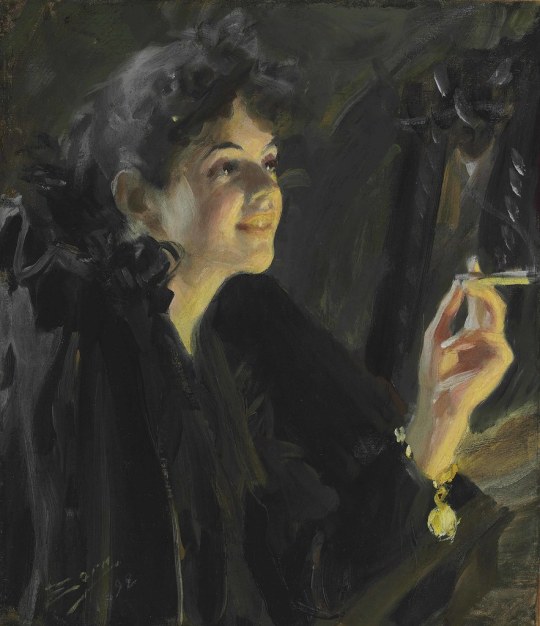Text
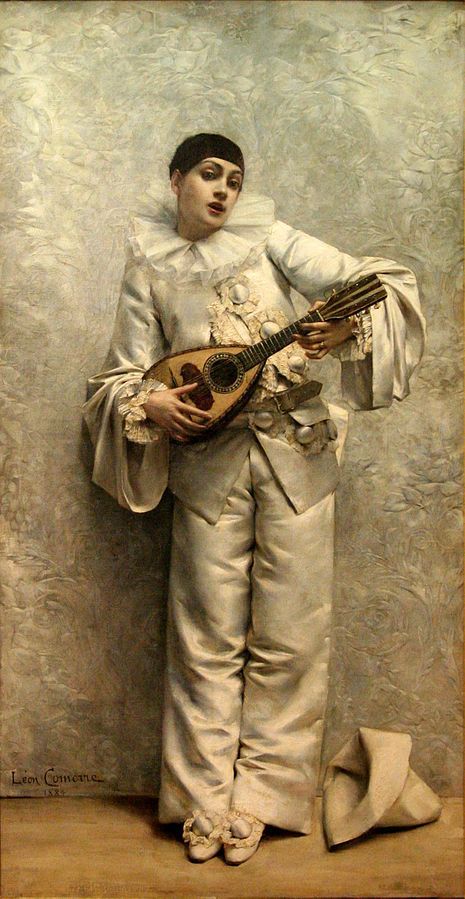
Léon Comerre (1850-1916)
"Pierrot jouant de la mandoline" ("Pierrot playing the mandolin") (1884)
Oil on canvas
Academicism
705 notes
·
View notes
Text

John Singer Sargent - Ellen Terry as Lady Macbeth (1889)
550 notes
·
View notes
Text
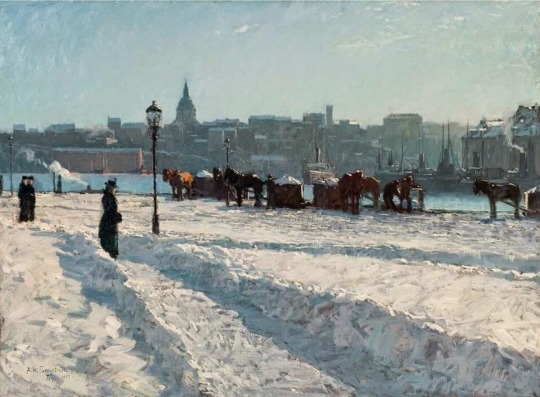
Winter Scene from the Stockholm Waterfront, 1899 by Alfred Bergström (Swedish, 1869--1930)
630 notes
·
View notes
Photo
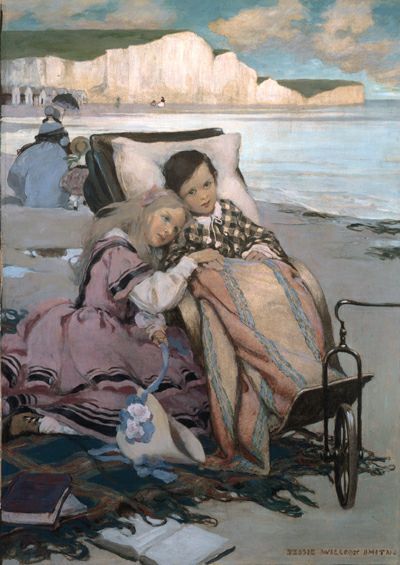
“Paul Dombrey and Florence on the Beach at Brighton” (1912) | Jessie Willcox Smith (1863-1935) | The Kelly Collection of American Illustration.
129 notes
·
View notes
Text

"A Summer Afternoon", (1924), oil on canvas | Herman H. Wessel (American, b.1878, d.1969), painter | Cincinnati Art Museum.
70 notes
·
View notes
Text

Henri-Léopold Lévy (1840 - 1904)
Portrait d'une femme
2K notes
·
View notes
Text

Jean-François Portaels (1818-1895)
"Juive de Tanger" ("Jewish woman from Tangier") (1874)
Oil on panel
Orientalism
Currently in a private collection
3K notes
·
View notes
Text
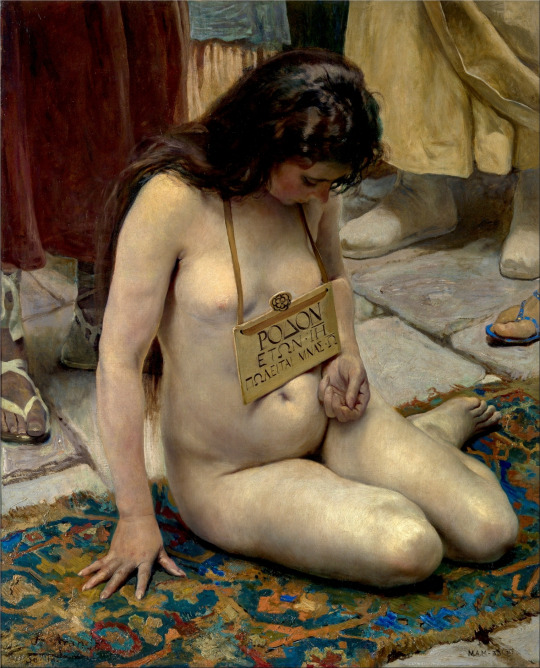
José Jiménez Aranda [Spanish. 1837 - 1903]
The Slave 1897
A young, completely nude slave sits on a carpet. The sign hanging from her neck bears a Greek inscription (Rose, 18 years old, on sale for 800 coins) that offers her as merchandise at an Oriental market. There's a sensual morbidity to his interpretation of the young woman’s pallid white body against the contrasting roughness of the colorful carpet.
Slavery gave rise to the figure of the Odalisque, that is the beautiful, white slave girl, a figure of quintessential beauty.
In the late 18th century Johann Friedrich Blumenbach, the father of physical anthropology, the father of scientific anthropology, an 18th century German scholar, assigned the name Caucasian to the people living in western Europe, to the River Ob in Russia to northern Africa, and to India. He called the people in Europe, over to India, well into Russia and North Africa, Caucasians because "they were the most beautiful in the world." Blumenbach enjoyed a scholarly reputation that gave his designation enormous heft and it got picked up very quickly.
Immanuel Kant stated that the Caucasians, the Georgians, the Circassians, sell their children, particularly their girls to the Turks, the Arabs, and the Persians, for reasons of eugenics, that is, to beautify the race. The idea of the beauty of Caucasians is linked with the idea of the slavery of Caucasians. Before the Atlantic slave trade to the western hemisphere shaped our ideas about what slave trades are all about, there was slave trade from this part of the world, that goes back to before the reaches of time.
Herodotus writing in the fifth century BC, writing about the enumeration of taxes and tributes paid to the Persian kingdom, collected from the lands it had controlled and the lands even far away in the distance. He said that the voluntary contribution was taken from the Colchians, that is the Georgians, and the neighboring tribes between them and the Caucasus, and it consisted of and still consists of (that is in the 5th century BC) every fourth year 100 boys and 100 girls. This was before Herodotus could even see the beginnings of it. Herodotus also mentioned the tribute from the southern most part of the edges of the Persian world and that was for the people called Ethiopians, what they owed was gold and ivory, people were not mentioned. So, the Black Sea Slave trade was the slave trade in the western world until the 15th century when the Ottomans captured Constantinople and cut the Black Sea off from western Europe. At that point, 15th century, the Atlantic slave trade becomes the western slave trade.
Daniel Edward Clarke, our Cambridge don, also located Circassian beauty, in the enslaved. “The Circassians frequently sell their children to strangers, particularly to Persians and Turkish Seraglios.” He speaks of one particular Circassian female who was 14, who was conscious of her great beauty, who feared her parents would sell her according to the custom of the country. The beautiful young slave girl became a figure, and she had a name; Odalisque. She combines the powerful notions of beauty, sex, and slavery. Ingres, Jerome, Powers and Matisse specialized in Odalisque paintings.
The figure of the Odalisque faded from memory as the Black Sea slave trade ended in the late 19th century, and the Atlantic slave trade overshadowed that from the Black Sea. Today, the word slavery invariably leads to people of African descent. Americans seldom associate the word Odalisque with with slavery in the Americas. Today many American painters use Odalisque figures, Michalene Thomas for instance who has done a series of what she calls American Odalisque. But the phrase and the figure of the Odalisque has lost its association with slavery. And now in American art history and in contemporary American art, Odalisque simply refers to a beautiful woman, usually unclothed.
If you want to learn more, listen to professor Nell Painter of Princeton University in the YT lecture “Why White People are Called Caucasian.”
217 notes
·
View notes
Photo

“Peaceful hour” (c.1915-19), oil on canvas | James R. Hopkins | The Ohio State University Faculty Club.
59 notes
·
View notes
Photo
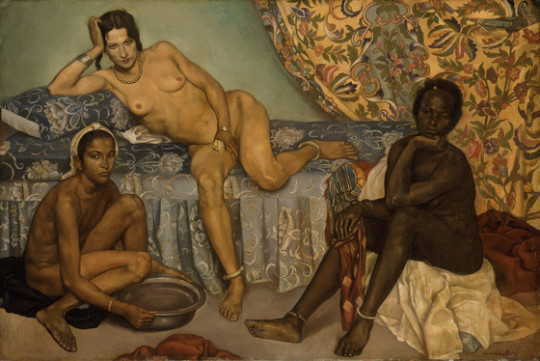
“The Three Races” (1898) | Emile Bernard (France, Lille, 1868-1941) | Los Angeles County Museum of Art
68 notes
·
View notes
Photo
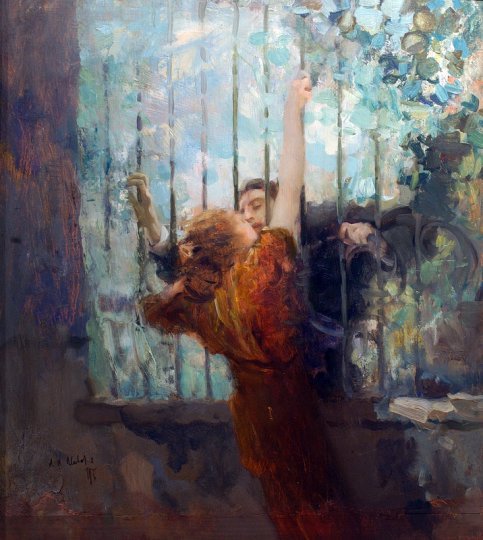
“Il convegno” (1918), olio su tavola | Ambrogio Antonio Alciati | Museo del Paesaggio, Verbania. (https://www.museodelpaesaggio.it/artista/ambrogio-antonio-alciati/)
68 notes
·
View notes





